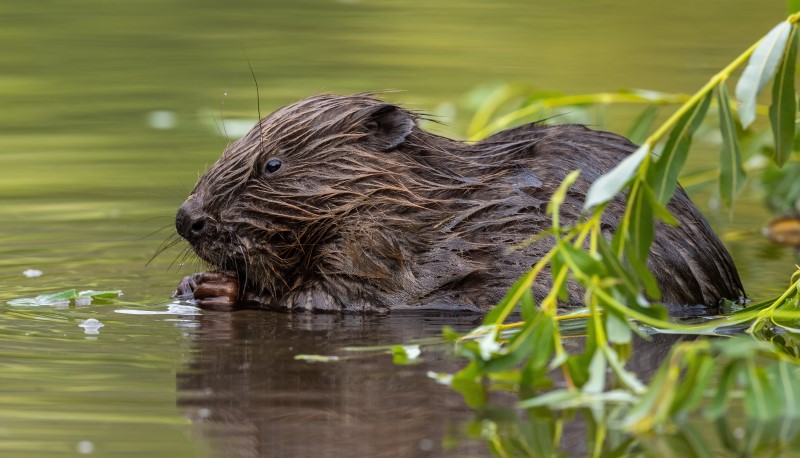Beaver Accommodation & Mitigation
8 August 2023Beavers are well established in Scotland now, with an estimated population of 1,500 animals in the Tay and Forth catchments, smaller numbers in Argyll and near Inverness, and with plans to translocate animals from problem areas in the Tay to new catchments, such as the Spey in the coming years. It is therefore important to find ways of accommodating beavers and mitigating any negative impacts that they might have on land management. Under the Beaver Management Framework, NatureScot have a Scottish Beaver mitigation scheme to provide advice and assistance to achieve this.

Accomodating beavers on land
Accommodating beavers is the priority intervention option. It can involve the creation of buffer zones along riparian areas. These areas lower human-wildlife conflict and reduce the need for further beaver mitigation measures. Most beaver activity occurs within 5m of a watercourse, therefore these buffer zones could be as small as 6-10m wide. However, as ‘ecosystem engineers’ accommodating beavers on land can have significant impacts on land management, both positive and negative.
Mitigating against beaver impacts
Accommodating beavers can be difficult due to how they can significantly change landscapes. They bring benefits to land however there are also risks associated with their behaviour. On areas of land such as highly productive farmland or close to key infrastructure including septic tanks and powerlines, beaver activity may need to be mitigated.
NatureScot provide free expert advice to all through their Beaver Mitigation Scheme. A suite of measures have been established to help limit the negative impacts that beavers could have to lands adjacent to their habitats.
NatureScot's mitigation scheme can provide -
- Advice and knowledge
- Techniques & building skills
- Licenced intervention
- Innovative solutions
| Example of mitigation measures | |||
|---|---|---|---|
| Beaver activity | Mitigation technique | Who is involved? | More information |
| Dam building | Dam notching: Short team option to reduce volume of water overspilling onto land. | Carried out under license normally by land manager or beaver specialist contractors. | Contact beavers@nature.scot |
| Dam building | Dam removal: Removal can be effective in alleviating immediate issues however may need to be repeated several times. | If less than 2 weeks old, no license required. Carried out under license if dams are over two weeks old to ensure beaver welfare. | Contact beavers@nature.scot |
| Beaver burrowing | Riparian planting and buffer zones: Trees and vegetation can enhance the resilience of river banks. | Landowner/land manager. Funds may be available through Agri-environment Climate Scheme (AECS) water margins and small-scale tree planting. Forestry Grant Scheme and Nature Restoration Fund may be suitable for larger schemes. | AECS Forestry Grant Scheme Nature Restoration Fund |
| Beaver burrowing | Willow spilling: A common river restoration technique to protect riparian zones. | Mitigation scheme may support some trials for demonstration sites. Contact beavers@nature.scot. Landowner/land manager might be able to access funding for restoring riverbanks may also be available through Agri-environment Climate Scheme (AECS). | contact beavers@nature.scot. Public or private funding may also be available. AECS |
| Beaver foraging | Individual tree protection: Established methods for tree wrapping include wire mesh and using WOBRA deterrent paint. | Limited protection for high value trees may be supported my mitigation scheme. | Read NatureScot’s guidance on tree wrapping for more information. |
Innovative use of technology example:
As dams can be removed if less than 2 weeks old, monitoring their locations is crucial. Water level sensors are being trialled to monitor change in river levels. A rise in water level with no subsequent fall indicates a beaver dam had been built and sends an automated email altering the farmers, allowing him to quickly remove it.

Case Study at West Moss-side Farm
West Moss Side Organic Farm is concerned about beaver activity and discusses the mitigation options with Dr Roo Campbell who is part of the beaver mitigation scheme. Watch video here
Sign up to the FAS newsletter
Receive updates on news, events and publications from Scotland’s Farm Advisory Service
